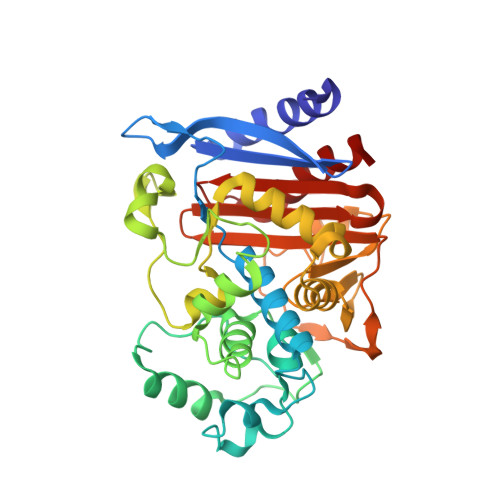Deconstructing fragment-based inhibitor discovery
Babaoglu, K., Shoichet, B.K.(2006) Nat Chem Biol 2: 720-723
- PubMed: 17072304
- DOI: https://doi.org/10.1038/nchembio831
- Primary Citation of Related Structures:
2HDQ, 2HDR, 2HDS, 2HDU - PubMed Abstract:
Fragment-based screens test multiple low-molecular weight molecules for binding to a target. Fragments often bind with low affinities but typically have better ligand efficiencies (DeltaG(bind)/heavy atom count) than traditional screening hits. This efficiency, combined with accompanying atomic-resolution structures, has made fragments popular starting points for drug discovery programs. Fragment-based design adopts a constructive strategy: affinity is enhanced either by cycles of functional-group addition or by joining two independent fragments together. The final inhibitor is expected to adopt the same geometry as the original fragment hit. Here we consider whether the inverse, deconstructive logic also applies--can one always parse a higher-affinity inhibitor into fragments that recapitulate the binding geometry of the larger molecule? Cocrystal structures of fragments deconstructed from a known beta-lactamase inhibitor suggest that this is not always the case.



















